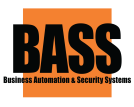
Electronic article surveillance is a technology for preventing shoplifting from retail stores, pilferage of books from libraries or removal of properties from office buildings. Special tags are fixed to merchandise or books. These tags are removed or deactivated by the clerks when the item is properly bought or checked out. At the exits of the store, a detection system sounds an alarm or otherwise alerts the staff when it senses active tags. Some stores also have detection systems at the entrance to the restrooms that sound an alarm if someone tries to take unpaid merchandise with them into the restroom. For high-value goods that are to be manipulated by the patrons, wired alarm clips called spider wrap may be used instead of tags.
There are several major types of electronic article surveillance systems:
- Electro-Magnetic, also known as magneto-harmonic or Barkhausen effect
- Acousto-magnetic, also known as magnetostrictive
- Radio Frequency (RFID, 8.2 MHz)
- Microwave
- Video surveillance systems (to some extent)
- Concealed EAS Surveillance Systems
Concealed EAS Systems
These types of systems have no visible pedestals or hindrance in the store facade. These systems are installed below the floor and dropped from the ceiling and can then protect merchandise of retailers from being stolen. There are site conditions and other parameters which enable them to be successfully installed but often it has now been noted that malls insist on concealed system as a mandate to increase the shopping experience.
Electro-magnetic systems
These tags are made of a strip of amorphous metal (metglas) which has a very low magnetic saturation value. Except for permanent tags, this strip is also lined with a strip of ferromagnetic material with a moderate coercive field (magnetic “hardness”). Detection is achieved by sensing harmonics and sum or difference signals generated by the non-linear magnetic response of the material under a mixture of low-frequency (in the 10 Hz to 1000 Hz range) magnetic fields.
When the ferromagnetic material is magnetized, it biases the amorphous metal strip into saturation, where it no longer produces harmonics. Deactivation of these tags is therefore done with magnetization. Activation requires demagnetization.
The EM systems are suitable for libraries to protect books and media. In the retail segment, unlike AM and RF, EM can protect small or round items and products with foil packaging or metal objects, like cosmetics, baby milk cans, medicines, DIY tools, homeware etc. EM systems can also detect objects placed in foil bags or in metal briefcases.
A further application is the Intellectual property (IP) protection against theft: Security paper with embedded microwires, which is used to detect confidential documents if they are removed from a building.
Acousto-magnetic systems
These are similar to magnetic tags in that they are made of two strips: a strip of magnetostrictive, ferromagnetic amorphous metal and a strip of a magnetically semi-hard metallic strip, which is used as a biasing magnet (to increase signal strength) and to allow deactivation. These strips are not bound together but free to oscillate mechanically.[1][2]
Amorphous metals are used in such systems due to their good magnetoelastic coupling, which implies that they can efficiently convert magnetic energy into mechanical vibrations.
The detectors for such tags emit periodic tonal bursts at about 58 kHz, the same as the resonance frequency of the amorphous strips.[3] This causes the strip to vibrate longitudinally by magnetostriction, and it continues to oscillate after the burst is over. The vibration causes a change in magnetization in the amorphous strip, which induces an AC voltage in the receiver antenna. If this signal meets the required parameters (correct frequency, repetition, etc.), the alarm is activated.
When the semi-hard magnet is magnetized, the tag is activated. The magnetized strip makes the amorphous strip respond much more strongly to the detectors, because the DC magnetic field given off by the strip offsets the magnetic anisotropy within the amorphous metal. The tag can also be deactivated by demagnetizing the strip, making the response small enough so that it will not be detected by the detectors.
AM tags are three dimensional plastic tags, much thicker than electro-magnetic strips and are thus seldom used for books.
Radio frequency (RFID) systems
These tags are essentially an LC tank circuit (L for inductor, C for capacitator) that has a resonance peak anywhere from 1.75 MHz to 9.5 MHz. The standard frequency for retail use is 8.2 MHz. Sensing is achieved by sweeping around the resonant frequency and detecting the dip.
Deactivation for 8.2 MHz label tags is typically achieved using a deactivation pad. In the absence of such a device, labels can be rendered inactive by punching a hole, or by covering the circuit with a metallic label, a “detuner”. The deactivation pad functions by partially destroying the capacitor. Though this sounds violent, in reality, both the process and the result are unnoticeable to the naked eye. The deactivator causes a micro short circuit in the label. This is done by submitting the tag to a strong electromagnetic field at the resonant frequency, which induces voltages exceeding the capacitor’s breakdown voltage.
In terms of deactivation, Radio Frequency is the most efficient of the 3 technologies (RF, EM, AM – there are no microwave labels) given that the reliable “remote” deactivation distance can be up to 30 cm (11.8 in). It also benefits the user in terms of running costs, since the RF de-activator only activates to send a pulse when a circuit is present. Both EM and AM deactivation units are on all the time and consume considerably more electricity. The reliability of “remote” deactivation (i.e. non-contact or non-proximity deactivation) capability makes for a fast and efficient throughput at the checkout.
Efficiency is an important factor when choosing an overall EAS solution given that time lost attempting to deactivate labels can be an important drag of cashier productivity as well as customer satisfaction if unwanted alarms are caused by tags that have not been effectively deactivated at the point of sale.
Deactivation of RF labels is also dependent on the size of the label and the power of the deactivation pad (the larger the label, the greater the field it generates for deactivation to take place. For this reason very small labels can cause issues for consistent deactivation). It is common to find RF deactivation built into barcode flat and vertical scanners at the POS in food retail especially in Europe and Asia where RF EAS technology has been the standard for nearly a decade. In apparel retail deactivation usually takes the form of flat pads of approx. 30×30 cm.
Source tagging
Source tagging is the application of EAS security tags at the source, the supplier or manufacturer, instead of at the retail side of the chain.[4] For the retailer, source tagging eliminates the labor expense needed to apply the EAS tags themselves, and reduces the time between receipt of merchandise and when the merchandise is ready for sale. For the supplier, the main benefit is the preservation of the retail packaging aesthetics by easing the application of security tags within product packaging. Source tagging allows the EAS tags to be concealed and more difficult to remove.
The high-speed application of EAS labels, suited for commercial packaging processes, was perfected via modifications to standard pressure-sensitive label applicators and was developed and introduced by Craig Patterson, initially for Hewlett Packard print cartridges. Today, consumer goods are source tagged at high speeds with the EAS label incorporated into the packaging or the product itself.
The most common source tags are AM strips and 8.2 MHz radio frequency labels. Most manufacturers use both when source tagging in the USA. In Europe there is little demand for AM tagging given that the Food and Department Store environments are dominated by RF technology.
Retail Intelligence
One of the best reasons to use EAS is the amount of data it can generate. This data is useful to shop managers, floor managers, product managers, and store display decisions.
For example –
- Traffic Intelligence – Conversion Rates
- Store Directional Mapping
- Hot & Cold Zones
- Using RFID – Restocking Reports
Finally, some of the advances made in EAS –
- Value-added traffic visibility solutions for better retail intelligence
- Directional alarming to reduce nuisance alarms
- On-demand Electronic Article Surveillance (EAS) saves energy when no shoppers are present
- Integrated alarm reporting and monitoring for better retail security management
- Continuously monitors system health and performance to enhance retail loss prevention efforts
- An intelligent part of an effective, chain-wide EAS program
- Ideal for high-volume retail stores with heavy traffic counts
- One of many integrated retail security solutions

